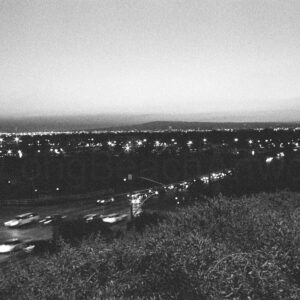If you’ve ever cruised down Hellman Street in Long Beach, you’ve passed a name with a legacy far deeper than the pavement it’s stamped on. While most locals recognize the name from street signs or neighborhood lore, few know the story of Isaias W. Hellman—a man whose bold vision and financial genius helped shape not only Southern California, but the entire West Coast.
From Bavaria to the Golden State
Isaias Wolf Hellman was born in Reckendorf, Bavaria in 1842. Like many young Europeans of his time, he set his sights on the United States, chasing opportunity and a new life. At just 17, he landed in Los Angeles in 1859, a dusty pueblo town on the cusp of transformation. He started small, selling dry goods, but Hellman had big ideas—and a sharp mind for business.
A Banking Pioneer in California
Hellman didn’t just witness the birth of modern California—he financed it.
In 1868, he co-founded Hellman, Temple & Co., Los Angeles’s second official bank. Then, in 1871, he teamed up with former California Governor John G. Downey to establish the Farmers and Merchants Bank, the city’s first lasting and successful bank. Hellman quickly became known for his steady, conservative banking style—he believed in safe lending, solid credit, and long-term investments.
His influence didn’t stop at city limits. In San Francisco, Hellman rescued the failing Nevada Bank in 1890, merging it in 1905 with Wells Fargo’s banking division to create the Wells Fargo Nevada National Bank—a foundation of what would become one of America’s most iconic banking institutions. He served as its president until his death in 1920.
A Quiet Force Behind California’s Boom
Hellman’s investments helped power the engines of growth across the state. He funded transportation, such as the 1874 launch of the Main Street and Agricultural Park Railway, an early electric trolley that helped Angelenos connect across the city. He backed early real estate developments and offered financing that supported titans like Harrison Gray Otis (publisher of the Los Angeles Times) and Edward Doheny, whose oil ventures struck black gold in Southern California.
And Then Came Long Beach
So what’s the Long Beach connection? In 1881, Isaias Hellman acquired the Rancho Los Alamitos land grant—an area that would eventually encompass parts of Long Beach, Lakewood, and Signal Hill. Though he initially viewed the purchase as a cattle-grazing opportunity, Hellman recognized the land’s potential. Over the next several decades, his family quietly guided the transformation of Rancho Los Alamitos into neighborhoods, laying the groundwork for communities that thrive today.
Hellman Avenue and nearby streets are more than geographic markers—they’re subtle tributes to a man whose foresight helped build the economic framework of modern California.
Why It Matters
Understanding who Isaias W. Hellman was connects us more deeply to the places we live. He wasn’t flashy. He didn’t seek the spotlight. But his influence is everywhere—from the banks we use to the streets we drive. Hellman’s legacy reminds us that the infrastructure of our cities and the vitality of our neighborhoods often stem from the quiet, calculated risks of people who saw what could be long before anyone else did.
So the next time you pass Hellman Street, remember: that name belongs to one of the West Coast’s founding financiers—a German immigrant with a head for banking, a heart for community, and a vision that helped California thrive.








